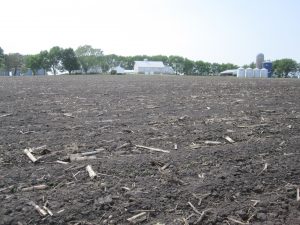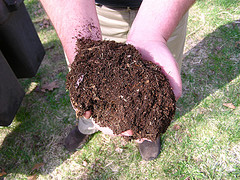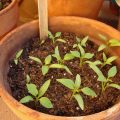 Soil is more than a medium to grow plants in; it’s filled with living organisms like fungi and bacteria that are necessary for the health of not only the soil itself, but for that of your garden as well. In order to maintain a healthy balance of these required organisms, you need to take care of your soil.
Soil is more than a medium to grow plants in; it’s filled with living organisms like fungi and bacteria that are necessary for the health of not only the soil itself, but for that of your garden as well. In order to maintain a healthy balance of these required organisms, you need to take care of your soil.
What is soil enrichment?
Soil enrichment is the practice of curating the ground so that your crops grow like they should. In an ideal environment, like the ones in forests, where plants of all kinds grow wild, the soil is healthy. The various plants: trees, bushes, flowers, and so on, all provide and take away different nutrients, leaving the soil properly balanced and protected. Modern farming doesn’t do this. You may plant differing types of vegetables and fruits, but doing so leaves the soil exposed, and the crops take away the vital nutrients without adding any back in. The soil becomes unbalanced and unhealthy, leaving your crops affected. This is why fertilizers were invented – to add back in the things that have been leeched out, thus helping your plants grow. However, there are organic methods that you can turn to, without ever having to resort to chemical-based fertilizers. (Unless you wish to use them, we don’t judge.)
How do I enrich my soil?
There are several tried and true methods of naturally putting nutrients back into the soil. They include:
Composting – Compost consists of leftover organic matter, such as potato skins, watermelon rinds, and other bits of leftover food, such as table scraps. You can also include weeds, flower stems, and other natural items in your compost bin, which, in turn, will produce healthy soil that can be placed on top of or mixed into the soil in your garden.
Animal Manure – Animal manure may not smell so great, but your garden will love it. This is another natural way to introduce important nutrients back into the ground. Manure primarily contains nitrogen, although it has other minerals and naturally occurring chemicals that will perk up your fruit and vegetable plants. You can add it to your garden at any time – before you plant, while your crops are growing, or after you harvest them.
Leaving Crop Residue Behind – You might be tempted to completely strip away the remnants of your crops after harvesting them. However, leaving them behind – the stalks, root systems and other things – is good, as they will decay during the non-planting season and leach nutrients back into the ground. This will enrich your soil, as the remaining bits work like the layers in a forest. You will end up with healthier soil as a result.
Add Mulch – Most people think of tiny bits of decaying wood (such as bark) when they hear the word “mulch.” However, mulch can be in that particular form, or it can be made up of compost or decaying leaves. Mulch protects your soil by providing it with a protective layer that traps in moisture while adding nutrients at the same time.
Pic by United Soybean Board




[…] via The Basics of Soil Enrichment | Be Self Sufficient […]
[…] Basics of Soil Enrichment […]